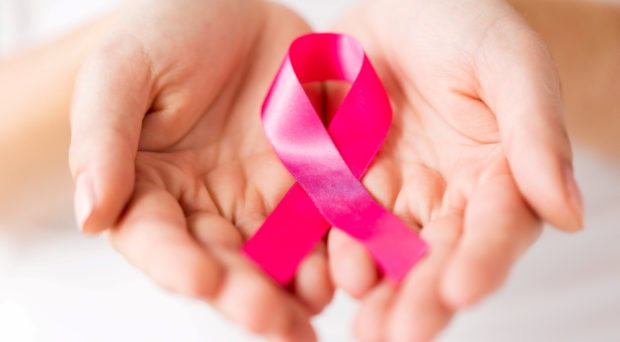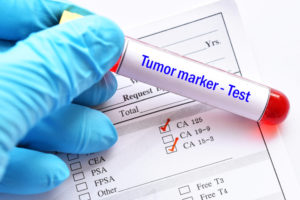[ad_1]
Breast Cancer Awareness Month runs for the whole of October and, once again, reveals the severity of this disease, and the huge impact this has on patients’ lives, and sheds light on the urgent need of developing effective global diagnostic measures to reduce healthcare inequalities and promote breast cancer control worldwide. This is well highlighted in a collection of articles curated by BMC Cancer, which showcases some of the latest research on the improvement of breast cancer screening programs and early diagnosis.

© Syda Productions / stock.adobe.com
According to the World Health Organization (WHO) 2.3 million women were diagnosed with breast cancer in 2020 and 685 000 deaths were recorded globally. Interestingly, significant differences in breast cancer mortality rates have been evidenced among countries, as a result of major global inequalities in distribution and access to optimal care. Although High Income Countries (HICs) have overall higher breast cancer incidence rates, the prognosis of breast cancer has significantly improved in the last decades, with the five-year survival rate exceeding 90%. In contrast, low- and middle-income countries (LMICs) have stagnant or increasing mortality rates, as clearly demonstrated by South Africa, where the five-year survival rate is around 40%.

© Natalia / stock.adobe.com
Reasons for these disparate trends include better risk factor control in HICs, educational resources, elevated compliance with screening and surveillance programs with earlier detection of disease. Furthermore, HICs have increased levels of coverage of essential health services and higher numbers of public cancer centers offering more advanced diagnostic techniques and treatments. It is in the low resource scenarios where most of the cases and most of the mortality should be expected in the next few decades and where concerted efforts should attempt to decrease the impact of the disease. In 2015, the United National General Assembly adopted the 2030 Agenda for Sustainable Development Goals (SDGs) built on the principle of “leaving no one behind”. The goals highlighted the importance of fighting inequalities across the world and specifically two goals, SDG3 and SDG10, have the ambitious aim of reducing disparities within and among countries and ensuring healthy lives for all at all ages.
In alignment with this, in 2021 the WHO launched the Global Breast Cancer Initiative (GBCI). This strategic collaboration seeks to empower women and strengthen breast cancer control with the final goal of tackling disparities in breast cancer management and reducing the global mortality by 2.5% per year by 2040. The GBCI aims to achieve these objectives through three pillars: health promotions for early detection; timely diagnosis and comprehensive breast cancer management. Through these pillars the WHO clearly acknowledges that effective global breast cancer treatment primarily relies on early detection, accurate diagnosis, and access to multimodal cancer therapy, with emphasis placed on early detection as pivotal to cancer control in LMICs.
On occasion of Breast Cancer Awareness Month and as part of our role in promoting progress towards achieving the SDGs, BMC Cancer has curated a collection of articles that emphasize the importance of early detection and effective screening programs in global breast cancer management.

© Gorodenkoff / stock.adobe.com
As highlighted in a few studies included in the collection, public campaigns raising attention to women’s health, the education and training of the healthcare workforce and the improved access to primary care play key roles in implementing effective screening programs. For instance, Sarker and colleagues reported the effectiveness of an educational intervention program on breast cancer knowledge among young female students of a university in Bangladesh. Thus, increasing awareness among women of the signs and symptoms of breast cancer, improving health literacy and patient education are vital aspects for diagnosing at least 60% of invasive breast cancer at stage I or II – the aim set out by the GBCI.
At the same time, the success of screening interventions relies on the participation of the target population. As a result, new screening programs must be acceptable, equitable, accessible, sustainable, and economically efficient for target populations. Additionally, one of the main criteria of a good screening programs is that the overall benefits should outweigh the physical, psychological and financial harms. This is well addressed in the study protocol published by Roux and colleagues where the ethical, psychological and socio-economic impact of a new risk-stratified screening strategy will be investigated.

© jarun011 / stock.adobe.com
Besides accessible care, accuracy of the initial diagnosis is another objective of all programs, requiring increasing resources and training. Particularly, great efforts are currently focused on the development of advanced diagnostic tools and the identification of new effective biomarkers. Interestingly, liquid biopsy has been suggested as a promising tool that would afford timely and non-invasive assessment of breast cancer also in LMICs, through the identification of different kinds of tumor material – such as nucleic acids, proteins, extracellular vesicles and whole cells – in various biofluids. In this regards, Shewell and colleagues and Lee and colleagues identified new serum breast cancer biomarkers, while Ekstrӧm and colleagues demonstrated the potential use of extracellular vesicles from lymphatic drainage for disease monitoring.
We hope you will enjoy reading this collection of articles showcasing some of the latest advances published in BMC Cancer that contribute to the aims set out by the GBCI.
[ad_2]
Source link